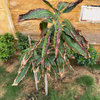shy bearers. . .but don't call Edward bashful. . .
mangodog
13 years ago
Related Stories

SAVING WATERHouzz Call: Are You Letting Go of Your Lawn?
Many facing a drought are swapping turf for less thirsty plantings. If you’re one of them, we’d like to hear about it
Full Story
LIFEWhat You’re Reading This Summer — and Where
Check out Houzzers’ summer reading lists and get some ideas for your own!
Full Story
BATHROOM WORKBOOK5 Ways With a 5-by-8-Foot Bathroom
Look to these bathroom makeovers to learn about budgets, special features, splurges, bargains and more
Full Story
DECORATING GUIDESGet the Scoop on Finding the Best Paint for Your Money
Scoring the best deal on paint for your home may have nothing to do with advertised specials
Full Story
MOST POPULARThe Right Way to Test Paint Colors
Here are 5 key steps to take to ensure you're happy with your wall paint color
Full Story
CURB APPEAL9 Daring Colors for Your Front Door
Stand out from the neighbors with a touch of neon green or a punch of hot pink
Full Story
MOVINGMaking a Home Away From Home
Feeling like a stranger in a strange land? These tips can help ease the transition after a big move
Full Story
WHITEWhat to Know Before You Paint Your Walls White
A coat of white paint can do wonders in one room and wreak havoc in another. Here are tips for using the popular hue
Full Story
KITCHEN APPLIANCESThe Many Ways to Get Creative With Kitchen Hoods
Distinctive hood designs — in reclaimed barn wood, zinc, copper and more — are transforming the look of kitchens
Full Story
MOST POPULAR7 Soothing Spaces: How to Use Color to Create Calm at Home
Started your new year on the wrong foot? Feeling the February blahs? Maybe you need a color fix in your home
Full Story






mango_kush
mangodogOriginal Author
Related Professionals
West Milford Landscape Architects & Landscape Designers · Wrentham Landscape Architects & Landscape Designers · Beachwood Landscape Architects & Landscape Designers · Simi Valley Landscape Architects & Landscape Designers · Wheeling Landscape Architects & Landscape Designers · Zion Landscape Architects & Landscape Designers · San Juan Landscape Architects & Landscape Designers · Manchester Landscape Contractors · Bridgeview Landscape Contractors · El Mirage Landscape Contractors · Goodlettsville Landscape Contractors · South Lake Tahoe Landscape Contractors · Waldorf Landscape Contractors · Wanaque Landscape Contractors · Watertown Landscape Contractorsmango_kush
mangodogOriginal Author
murahilin
mangodogOriginal Author
mango_kush
puglvr1
jfernandez
mangodogOriginal Author
jfernandez
mangodogOriginal Author
okisteve
puglvr1
okisteve
puglvr1
okisteve
sapote
mangodogOriginal Author